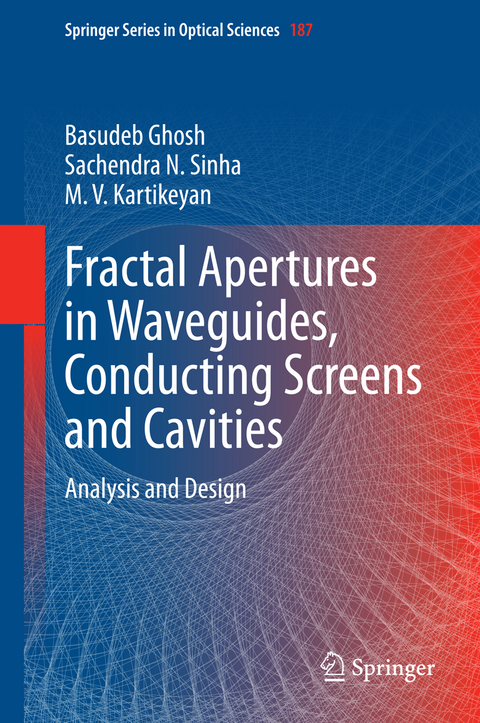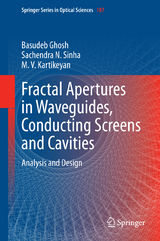Fractal Apertures in Waveguides, Conducting Screens and Cavities
Springer International Publishing (Verlag)
978-3-319-06534-2 (ISBN)
This book deals with the design and analysis of fractal apertures in waveguides, conducting screens and cavities using numerical electromagnetics and field-solvers. The aim is to obtain design solutions with improved accuracy for a wide range of applications. To achieve this goal, a few diverse problems are considered. The book is organized with adequate space dedicated for the design and analysis of fractal apertures in waveguides, conducting screens and cavities, microwave/millimeter wave applications followed by detailed case-study problems to infuse better insight and understanding of the subject. Finally, summaries and suggestions are given for future work.
Fractal geometries were widely used in electromagnetics, specifically for antennas and frequency selective surfaces (FSS). The self-similarity of fractal geometry gives rise to a multiband response, whereas the space-filling nature of the fractal geometries makes it an efficient element in antenna and FSS unit cell miniaturization. Until now, no efforts were made to study the behavior of these fractal geometries for aperture coupling problems. The aperture coupling problem is an important boundary value problem in electromagnetics and used in waveguide filters and power dividers, slotted ground planes, frequency selective surfaces and metamaterials. The present book is intended to initiate a study of the characteristics of fractal apertures in waveguides, conducting screens and cavities.
To perform a unified analysis of these entirely dissimilar problems, the "generalized network formulation of the aperture problems" by Mautz and Harrington was extended to multiple-aperture geometry. The authors consider the problem of coupling between two arbitrary regions coupled together via multiple apertures of arbitrary shape. MATLAB codes were developed for the problems and validated with the results available in the literature as well as through simulations on ANSOFT's HFSS.
Introduction.- Method of Moment Formulation of Coupling through Apertures.- Fractal Frequency Selective Diaphragms in Rectangular Waveguide.- Electromagnetic Transmission through Fractal Apertures in Conducting Screen.- Radiation from Rectangular Waveguide-Fed Fractal Aperture Antennas.- Investigations on Cavity-Backed Fractal Aperture Antennas.- Conclusions and Future Work.
| Erscheint lt. Verlag | 3.7.2014 |
|---|---|
| Reihe/Serie | Springer Series in Optical Sciences |
| Zusatzinfo | XIII, 201 p. 150 illus., 78 illus. in color. |
| Verlagsort | Cham |
| Sprache | englisch |
| Maße | 155 x 235 mm |
| Gewicht | 469 g |
| Themenwelt | Naturwissenschaften ► Physik / Astronomie ► Elektrodynamik |
| Naturwissenschaften ► Physik / Astronomie ► Optik | |
| Technik ► Elektrotechnik / Energietechnik | |
| Schlagworte | Cavity Resonators • Fractal Aperture Antennas • Fractal Apertures in Conducting Screens • Fractal Apertures in Waveguides • Fractal Frequency Selective Diaphragms • rectangular waveguide |
| ISBN-10 | 3-319-06534-3 / 3319065343 |
| ISBN-13 | 978-3-319-06534-2 / 9783319065342 |
| Zustand | Neuware |
| Haben Sie eine Frage zum Produkt? |
aus dem Bereich




